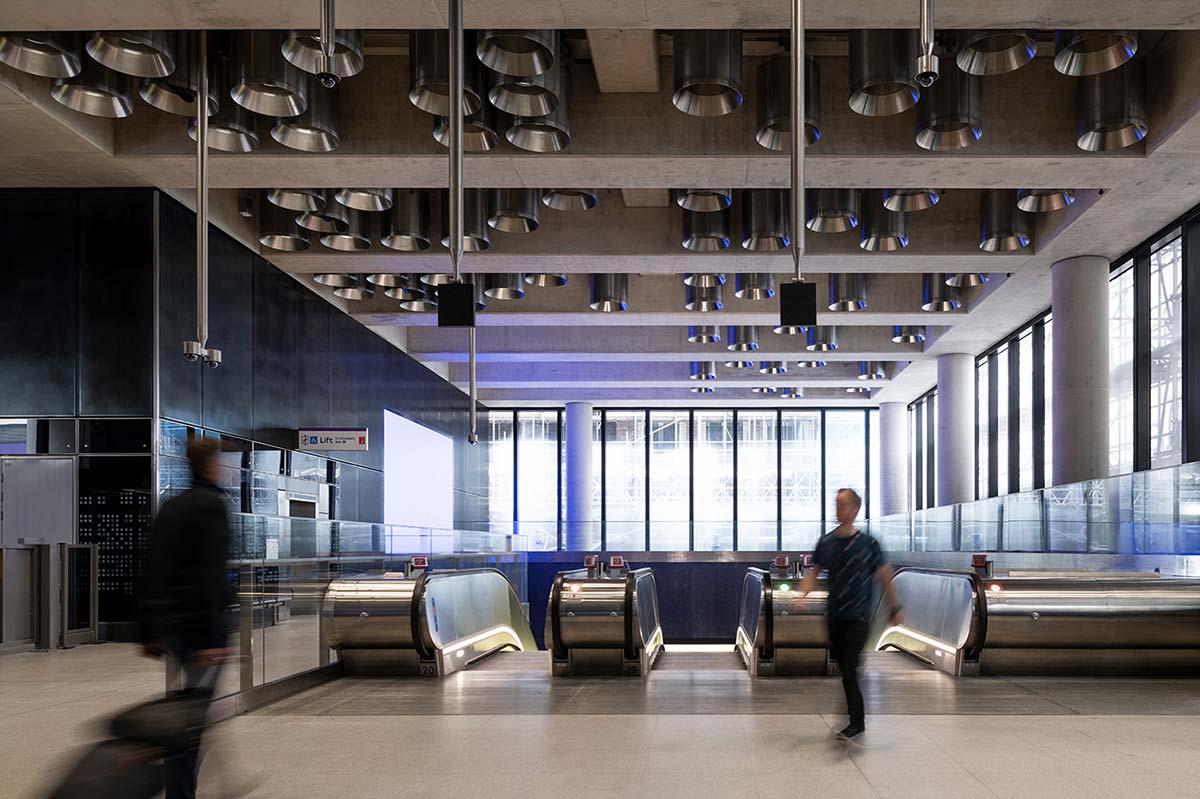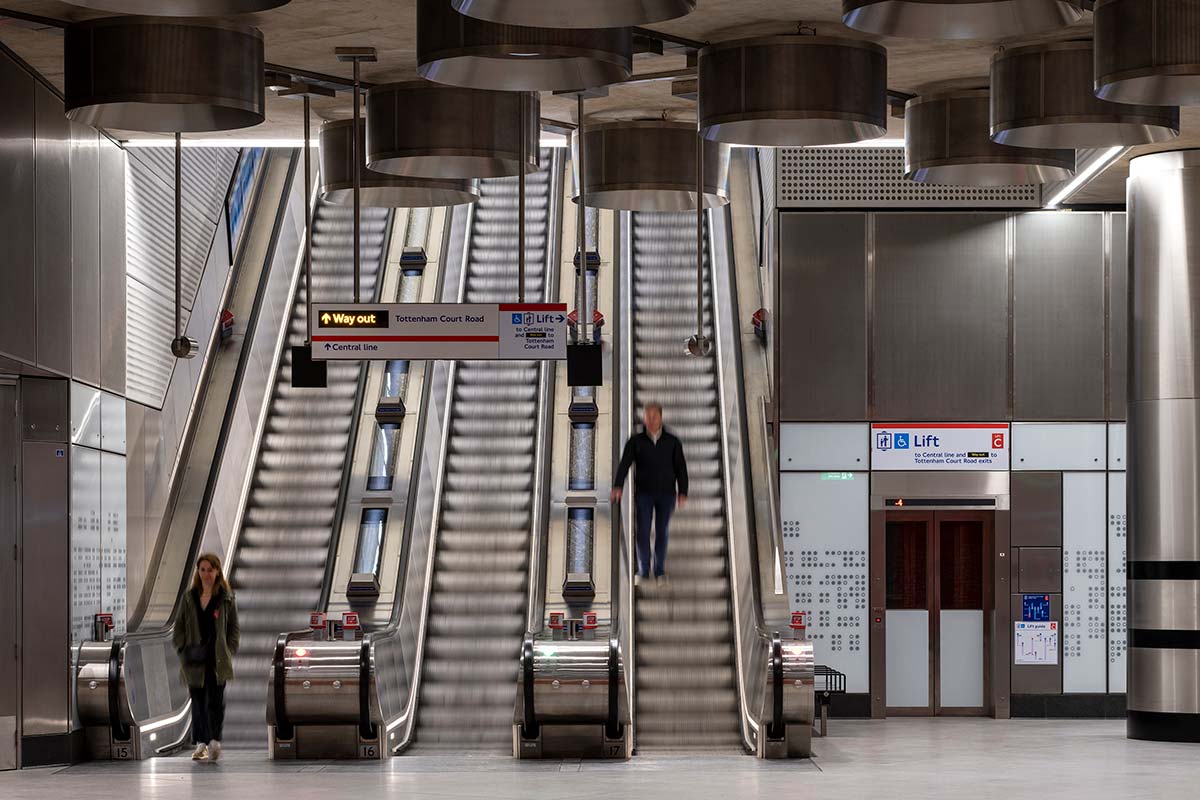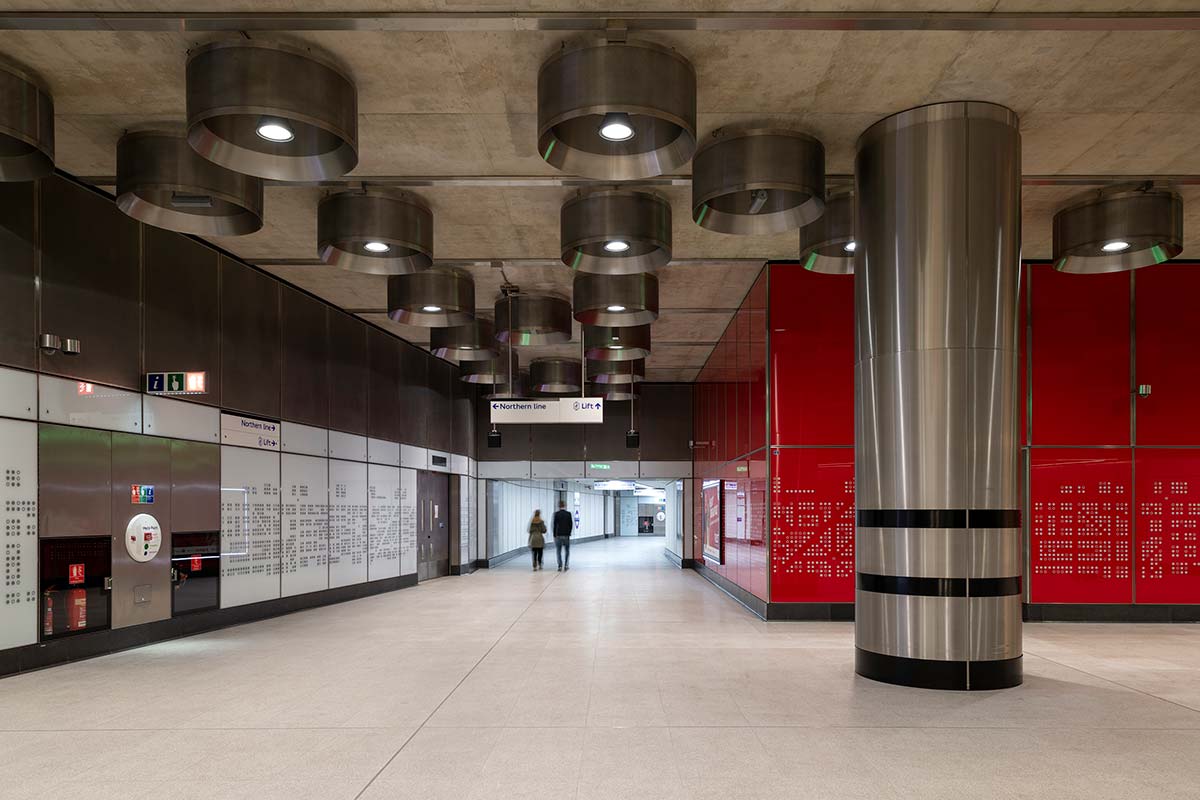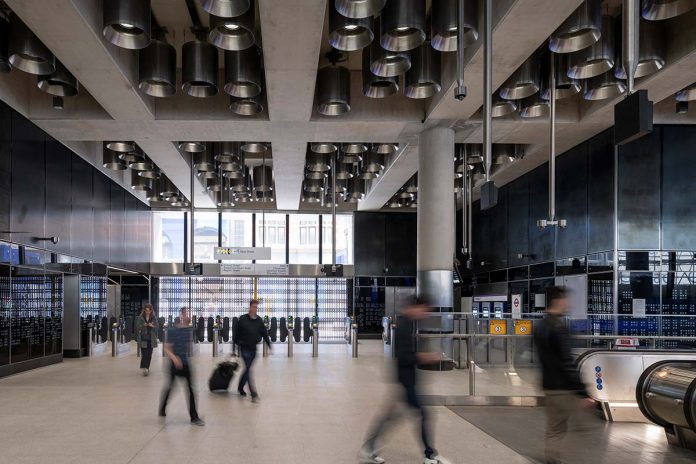Tottenham Court Road is one of the metropolitan tube stations of the Elizabeth Line (originally Crossrail), the new 100-km route crossing the whole city of London on an east-west axis, covering 60 miles between Reading, Heathrow and Shenfield. Servicing a central zone in a district containing office buildings, shops and theaters, the Tottenham Court Road station has been designed by the studio Hawkins/Brown to handle a rush hour flow of about 30,000 passengers per hour.

Offering connection to the existing Northern and Central lines, the station has a double exit, ‘darker’ to the west in the direction of Soho, and ‘lighter’ to the east, as the architect Roger Hawkins explains, because the eastern side enjoys natural light entering through two glass canopies placed over the escalators on which passengers reach a small square facing Centre Point.

Like many other stations of the Elizabeth Line, the spaces include public art works that were commissioned during the design phase: the walls along the escalators host geometric ceramic pieces by the artist Daniel Buren, one in black and white and one in colors, in a sort of tribute to the mosaics of Eduardo Paolozzi that once marked the entrance to the escalators of Tottenham Court Road and have now been partially moved to the University of Edinburgh. Hawkins/Brown have also created decorative motifs for the walls of the exchange area, reinterpreting the plan of Soho.

The architecture firm has also designed the lighting for the new station, produced by iGuzzini. The ceiling of the station features a series of dramatic perforated metal ‘drums’ that combine sound absorption with lighting and built-in speakers for the PA system. Not by chance, the design takes its cue from stage lighting in the theaters of Soho.

The external stainless steel enclosures are perforated, and the bodies are filled with black mineral wool covered in fabric to reduce background noise. Most of the cylinders contain MaxiWoody spotlights, all with DALI connection, placed overhead to spread diffused lighting downward.
All the drums are positioned in a playful way between the concrete beams: their irregular arrangement is based on the flow of people through the station, with greater concentration in the areas where more passengers are likely to gather.







